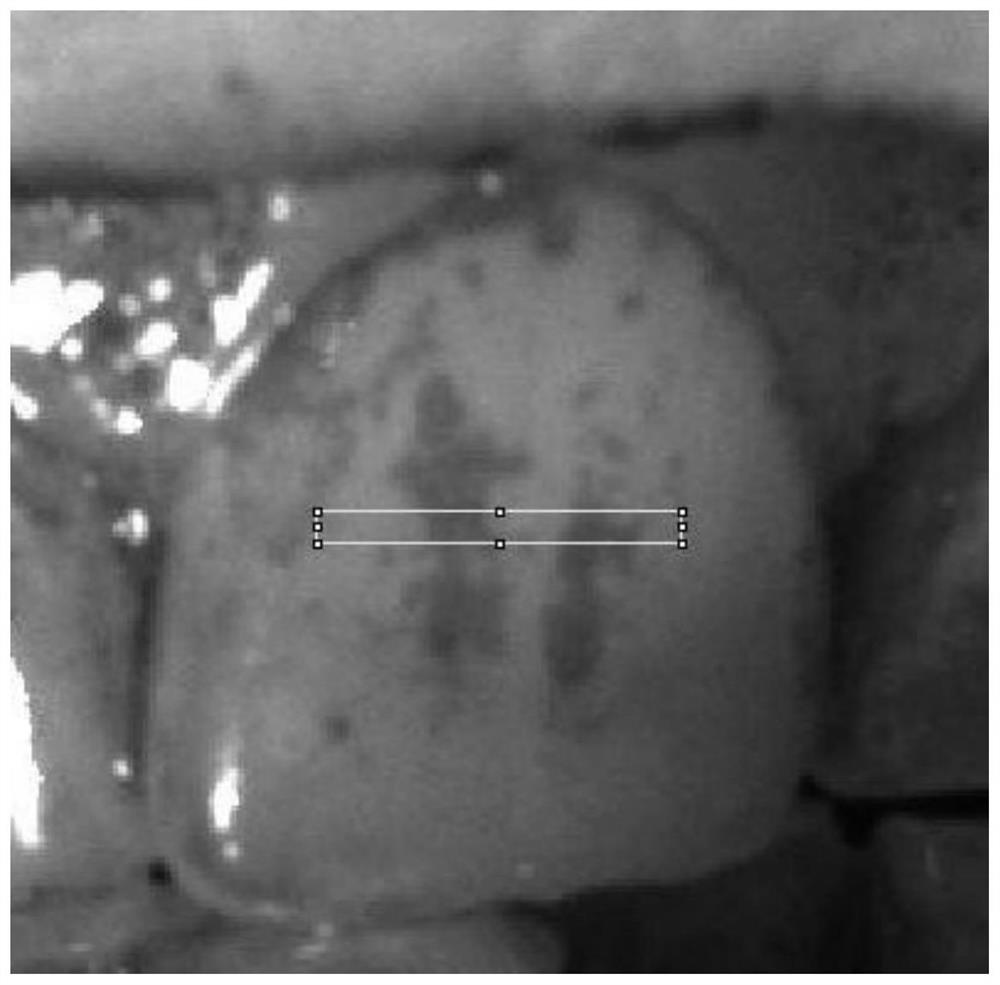Method for plaque detection
A technology of bacterial plaque and dental plaque, which is applied in the fields of pharmaceutical formulation, diagnostic recording/measurement, analysis using fluorescence emission, etc., can solve problems such as difficulty in developing new antibiotics, and achieve the effect of short lifespan
- Summary
- Abstract
- Description
- Claims
- Application Information
AI Technical Summary
Problems solved by technology
Method used
Image
Examples
Embodiment approach
[0102] One embodiment includes
[0103] - subjecting the target tooth region to light having a peak wavelength of about 405 nm or 810 nm or both (optionally sequentially);
[0104] - measuring the first autofluorescence produced by the target tooth region in response to such light, optionally using filtering to distinguish predetermined autofluorescence; then
[0105] - subjecting the target tooth region to light having a peak wavelength of about 405 nm or 810 nm or both in the presence of a plaque-specific photosensitizer (optionally sequentially);
[0106] - measuring the secondary autofluorescence produced by the target tooth region in response to such light, optionally using filtering to distinguish predetermined autofluorescence; and
[0107] - determining the ratio of the first autofluorescence and the second autofluorescence.
[0108] Typically, the rate of adsorption and optionally photobleaching of plaque-specific photosensitizers is determined.
[0109] In one emb...
PUM
 Login to View More
Login to View More Abstract
Description
Claims
Application Information
 Login to View More
Login to View More - Generate Ideas
- Intellectual Property
- Life Sciences
- Materials
- Tech Scout
- Unparalleled Data Quality
- Higher Quality Content
- 60% Fewer Hallucinations
Browse by: Latest US Patents, China's latest patents, Technical Efficacy Thesaurus, Application Domain, Technology Topic, Popular Technical Reports.
© 2025 PatSnap. All rights reserved.Legal|Privacy policy|Modern Slavery Act Transparency Statement|Sitemap|About US| Contact US: help@patsnap.com



